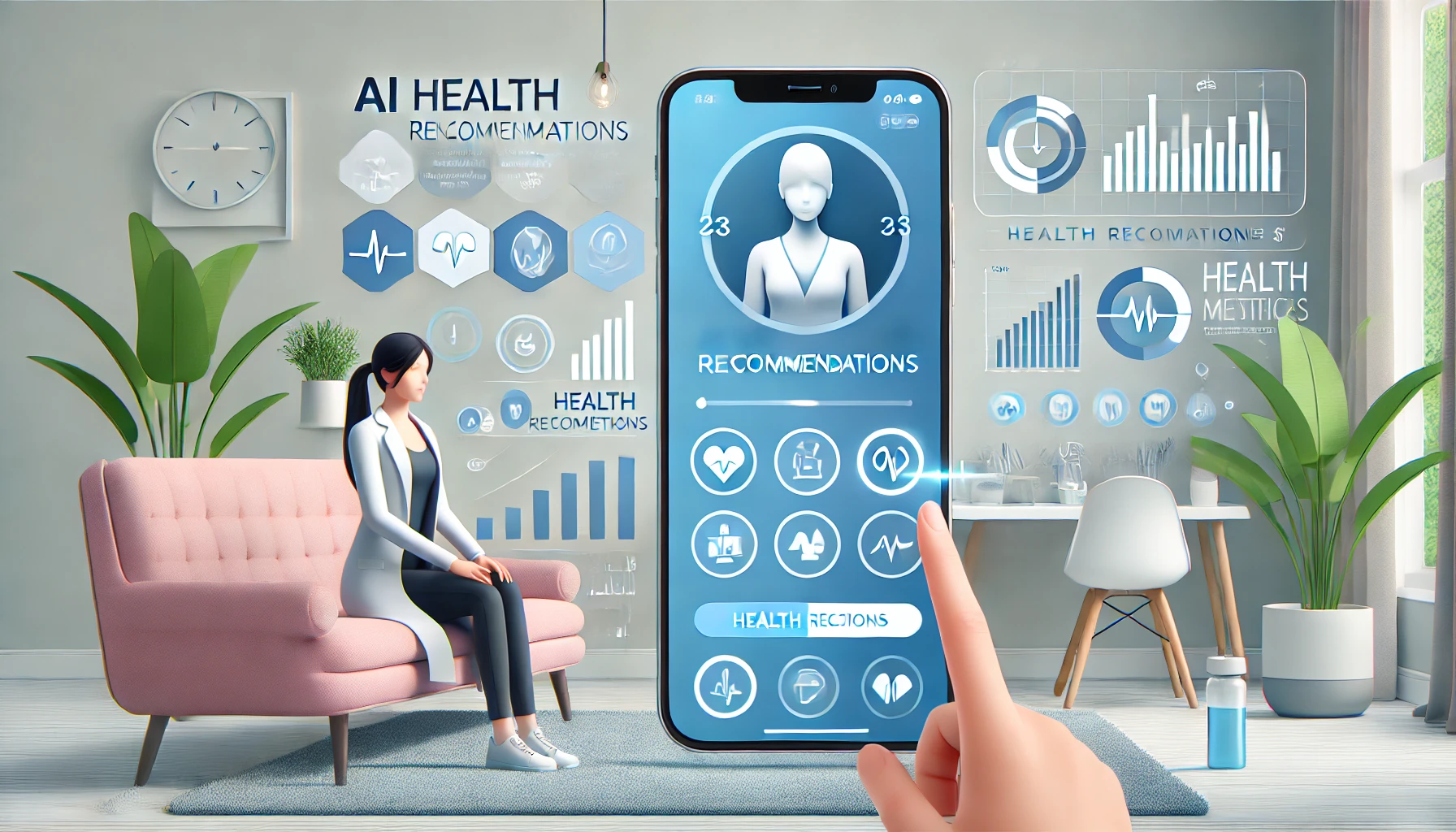AI Health Coach
Highlights
1. A new article in Science Advances shows that generative AI, such as GPT-4, can promote individual creativity in writing short stories while limiting collective diversity.
2. AI health coach apps are being developed by Oura and Thrive AI Health.
3. ESM3 is a new AI protein design model with potential applications in drug development and biotechnology.
4. Gemini 1.5 Pro enables a robot to navigate an office, responding to natural language commands.
5. OpenAI introduced a five-level system to track its progress, from Chatbots, all the way up to AI that can do the work of an organization.
Innovation Insights
1. AI can make you more creative—but it has limits (MIT Technology Review)
Generative AI can significantly enhance individual creativity, especially for less inherently creative writers, by simplifying and accelerating the creation of text, images, video, and audio. However, while it boosts individual output, AI tends to homogenize and flatten the overall quality and diversity of creative works. Research involving OpenAI’s GPT-4 revealed that while less creative writers saw a marked improvement in their work quality with AI assistance, more creative writers saw minimal benefit. Furthermore, AI-generated content was more similar in terms of semantics and style compared to human-generated content, potentially leading to a more homogenized creative landscape.
2. The 6 Disciplines Companies Need to Get the Most Out of Gen AI (Harvard Business Review)
To extract economic value from generative AI, companies must develop disciplined capabilities in behavioral change, controlled experimentation, measurement of business value, data management, human capital development, and systems thinking. These capabilities enable organizations to choose the right projects by funding innovative individuals, selecting quick and practical wins, and aligning projects with the company’s identity. Once these disciplines are in place, companies can achieve greater productivity, customization, and competitive advantage.
AI Innovations
1. AI health coach
OpenAI Startup Fund and Thrive Global have launched Thrive AI Health, a company dedicated to creating an AI health coach aimed at democratizing access to expert-level health coaching (PR Newswire)
Oura has introduced an AI health coach, Oura Advisor, to its app, allowing users to chat about health metrics and receive personalized recommendations (CNET)
2. AI protein design model
Ex-Meta scientists at EvolutionaryScale have developed ESM3, a groundbreaking AI protein design model, secured $142 million in funding, and demonstrated its capability by creating new fluorescent proteins, with potential applications in drug development, sustainability, and biotechnology (Nature).
3. Foundation model
SenseTime’s latest AI model, SenseNova 5.5, matches GPT-4o’s performance with multimodal capabilities, enhances business applications, and offers various tools across industries, improving efficiency and reducing costs (MSN).
4. AI video
Odyssey, a startup building Hollywood-grade visual AI, aims to generate glitch-free, cinematic visuals with fine-tuned control over every element (Tom’s Guide).
5. Poe Previews
Poe, an AI model aggregator, has introduced a feature called “Previews,” enabling users to generate and interact with web applications directly within chats across various LLMs (Tom’s Guide).
6. Microsoft
MInference 1.0 introduces a dynamic sparse attention method that significantly accelerates the pre-filling stage for long-context large language models (LLMs) by up to 10x on a single A100 GPU without compromising accuracy (Microsoft).
Arena Learning is a method that enhances the post-training of large language models (LLMs) by simulating chatbot battles to generate high-quality training data, thereby significantly improving model performance through iterative training and evaluation using AI-driven feedback (Microsoft).
7. Anthropic
Anthropic’s upgraded console for its Claude chatbot, built on the Claude 3.5 Sonnet model, provides developers with advanced tools for creating and refining prompts (Tom’s Guide).
Anthropic launched fine-tuning for Claude 3 Haiku on Amazon Bedrock, allowing businesses to tailor the AI model for specific tasks (Anthropic).
8. Google
Google is bringing new features to Samsung devices, including an updated Gemini app for foldables, the “Circle to Search” feature, and Wear OS 5 on the Galaxy Watch 7 and Galaxy Watch Ultra (TechCrunch).
Google DeepMind’s new JEST training method claims to increase AI training speed by 13 times and improve power efficiency by 10 times compared to traditional methods (Tom’s Hardware).
9. OpenAI
OpenAI has introduced a five-level system to track its progress toward achieving artificial general intelligence (AGI), currently believing it is on the cusp of reaching the second level, “Reasoners,” which involves basic problem-solving capabilities akin to a human with a doctorate-level education (Bloomberg).
10. Amazon
Amazon’s AI-powered shopping assistant, Rufus, is now available to all U.S. customers in the Amazon mobile app, offering product search assistance, comparisons, recommendations, and other shopping-related queries (TechCrunch).
Other Innovations
1. Wearable
After testing five smart rings in seven months, the Samsung Galaxy Ring stands out with features like Find My support and a lighter form factor, making it a strong contender against the Oura Ring and other competitors in 2024 (ZDNet).
2. Battery
Prof. Y. Shirley Meng’s lab at UChicago has developed the world’s first anode-free sodium solid-state battery, promising inexpensive, fast-charging, high-capacity batteries for electric vehicles and grid storage (University of Chicago).
3. Blood substitute
Scientists have developed ErythroMer, an experimental hemoglobin-based blood substitute that mimics natural red blood cells, offering a potentially game-changing solution for emergency medical situations due to its universal compatibility, long shelf life, and ability to deliver oxygen effectively (Science).
4. Fiber optic communication
An international team of researchers has set a new record for fiber optic communications by achieving a data transmission rate of 402 terabits per second using innovative optical amplifiers and expanded communication bandwidths across multiple bands (IEEE Spectrum).
5. Robotics
Open-TeleVision is an immersive teleoperation system that enhances robot learning from demonstrations by enabling operators to perceive the robot’s surroundings stereoscopically and mirror their arm and hand movements, validated through data collection and imitation learning on complex tasks for humanoid robots (GitHub).
Google DeepMind’s Robotics team demonstrated a robot navigating their office using the Google Gemini 1.5 Pro model, showcasing the robot’s ability to respond to natural language commands and navigate based on multimodal instructions, achieving a 90% success rate in over 50 interactions with employees (TechCrunch).







